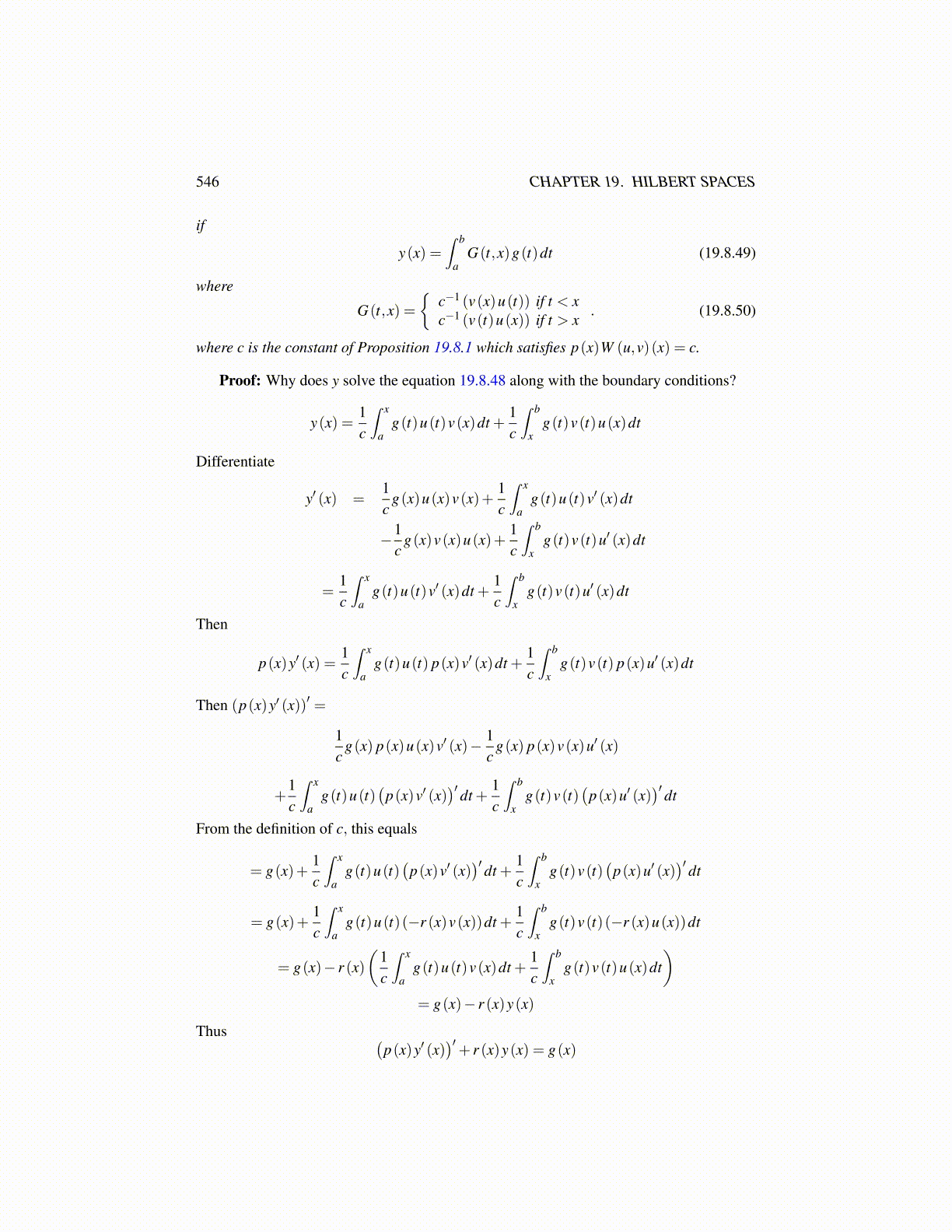
546 CHAPTER 19. HILBERT SPACES
if
y(x) =∫ b
aG(t,x)g(t)dt (19.8.49)
where
G(t,x) ={
c−1 (v(x)u(t)) if t < xc−1 (v(t)u(x)) if t > x
. (19.8.50)
where c is the constant of Proposition 19.8.1 which satisfies p(x)W (u,v)(x) = c.
Proof: Why does y solve the equation 19.8.48 along with the boundary conditions?
y(x) =1c
∫ x
ag(t)u(t)v(x)dt +
1c
∫ b
xg(t)v(t)u(x)dt
Differentiate
y′ (x) =1c
g(x)u(x)v(x)+1c
∫ x
ag(t)u(t)v′ (x)dt
−1c
g(x)v(x)u(x)+1c
∫ b
xg(t)v(t)u′ (x)dt
=1c
∫ x
ag(t)u(t)v′ (x)dt +
1c
∫ b
xg(t)v(t)u′ (x)dt
Then
p(x)y′ (x) =1c
∫ x
ag(t)u(t) p(x)v′ (x)dt +
1c
∫ b
xg(t)v(t) p(x)u′ (x)dt
Then (p(x)y′ (x))′ =
1c
g(x) p(x)u(x)v′ (x)− 1c
g(x) p(x)v(x)u′ (x)
+1c
∫ x
ag(t)u(t)
(p(x)v′ (x)
)′ dt +1c
∫ b
xg(t)v(t)
(p(x)u′ (x)
)′ dt
From the definition of c, this equals
= g(x)+1c
∫ x
ag(t)u(t)
(p(x)v′ (x)
)′ dt +1c
∫ b
xg(t)v(t)
(p(x)u′ (x)
)′ dt
= g(x)+1c
∫ x
ag(t)u(t)(−r (x)v(x))dt +
1c
∫ b
xg(t)v(t)(−r (x)u(x))dt
= g(x)− r (x)(
1c
∫ x
ag(t)u(t)v(x)dt +
1c
∫ b
xg(t)v(t)u(x)dt
)= g(x)− r (x)y(x)
Thus (p(x)y′ (x)
)′+ r (x)y(x) = g(x)